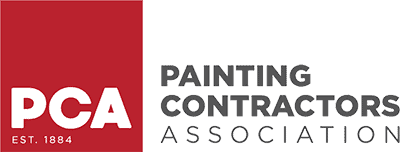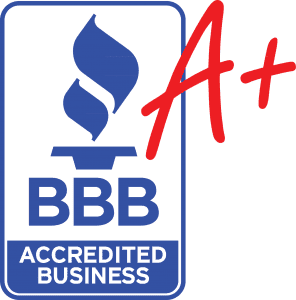Before any exterior wall changes color, the real work begins—on the surface. If the walls weren’t thoroughly cleaned, dried, repaired, and primed, even the most expensive paint can peel like old wallpaper. Proper surface preparation is not optional; it is the bedrock of lasting paint performance.
So, how do you confirm if the prep was done right? Look, touch, and ask. A proper surface prep is clean, dry, smooth to the touch, fully repaired, and coated with the correct primer. There should be no shortcuts—no painting over dust, mildew, gloss, or peeling paint. Moisture meters should show a reading below 15%. Bare areas should be primed. Every step should be documented.
Why does this matter? Because surface prep accounts for up to 60% of the total labor in a high-quality paint job. And yet, it’s the most overlooked part. Poor prep is the #1 cause of paint failure—even when using the best brands like Sherwin-Williams or Benjamin Moore.
This blog explains how you can spot good prep, call out poor workmanship, and hold painters accountable—before it’s too late.
We’ll guide you through:
- What to expect from prep by surface type
- What tools and products professional painters use
- What to see, ask, or test before paint is opened
- The warning signs that shortcuts were taken
- FAQs homeowners often ask about surface prep quality
Let’s start with why prep matters so much.
Why Surface Preparation Is Critical for Exterior Paint Longevity

The Chemistry of Adhesion
Paint is not just a color layer—it’s a film that must chemically and mechanically bond to a substrate. If the surface is dirty, wet, chalky, or glossy, the bond fails.
- Dust and chalk create a weak base.
- Mildew or algae keep growing under the paint film.
- Moisture trapped under paint will cause it to blister or peel.
- Glossy surfaces resist adhesion unless scuffed.
Modern acrylic paints are high-performing—but they can’t stick to instability. The result? Early failure even if the paint was top-tier.
Paint Failure Is Often a Prep Problem
Let’s look at a real-world example:
A homeowner repaints with premium paint, but blisters show up in less than a year. The culprit? The surface was washed just 6 hours before painting and moisture levels were still at 25%. The contractor skipped priming the raw wood edges. The paint never had a chance.
Other signs of poor surface prep:
- Peeling paint due to old layers not being scraped
- Flaking edges from poor sanding
- Bubbling over high-moisture spots
- Cracks returning because they weren’t filled properly
Manufacturer Warranties Require Proper Prep
Sherwin-Williams, Benjamin Moore, and PPG offer warranties—but with conditions. Their paints must be applied over a clean, sound, primed surface. If a warranty claim is filed and the surface was dirty or improperly primed, it’s void.
Contractors should provide a documented prep checklist, including moisture readings, substrate condition, and product usage. If they can’t—or won’t—that’s a red flag.
The Surface Prep Checklist: What to Confirm Before Painting
This is the phase where your eyes, hands, and questions are most valuable. Here’s what to look for stage by stage before the painters open a single can of paint:
Cleaning
Exterior surfaces must be power washed with care. Too much PSI can gouge wood or force water into cracks; too little leaves dirt behind.
| Step | What to Confirm |
|---|---|
| Power Washing | 500–2500 PSI, depending on material |
| Detergent Use | Mildew/mold cleaner like Jomax® or Simple Green® |
| Dryness | Surface dry to the touch, moisture <15% by meter |
| Post-Wash Check | No chalky residue, soap scum, or algae left behind |
Mildew must be killed, not just rinsed. Ask what cleaner they used and when it was done.
Scraping and Sanding
Loose or flaking paint needs to be scraped until a solid edge is reached. Then the transition must be sanded for smoothness.
- Feather-sanding ensures paint doesn’t telegraph uneven edges.
- Glossy trim or metal must be dull-sanded to promote adhesion.
Test it yourself: Run your hand along old transitions. You shouldn’t feel ridges.
Repairs and Caulking
A good contractor doesn’t just paint over rot or gaps.
- Rotted wood is replaced or stabilized with wood hardener and filled with Bondo® Wood Filler—not buried under caulk.
- Caulking should be neat, fully dried, and only applied after cleaning.
- Elastomeric compounds should be used for cracks in stucco—not brittle spackling paste.
Ask: What type of caulk are you using? It should be paintable, exterior-grade, like Big Stretch® or Dynaflex 230®.
Priming
Not every inch needs primer—but any bare wood, patched surface, or problem area does.
| Primer Type | Use Case |
|---|---|
| Stain-blocking (e.g. Zinsser®) | Bare wood, water stains, tannin-rich knots |
| Alkali-resistant (e.g. Loxon®) | New concrete or stucco |
| Bonding primer (e.g. Kilz®) | Glossy, metal, vinyl, or hard-to-coat areas |
Look for even primer coverage. If bare areas peek through or patches are unprimed, stop the project before paint goes on.
Substrate-Specific Surface Prep Best Practices

Not all surfaces are created equal. Each material demands tailored surface prep to ensure adhesion and longevity.
Wood Siding and Trim
- All loose paint scraped and sanded
- Dull finish to help primer grip
- Knots sealed with shellac primer (like BIN®)
- Moisture reading: under 15%
If rot is present, it should be stabilized or replaced—never painted over.
Stucco
- Hairline cracks filled with elastomeric patch
- Chalking brushed off with stiff bristle or power wash
- New patches must be fully dry and primed with alkali-resistant primer
Efflorescence? That must be chemically neutralized first, or it’ll break through paint again.
Brick
- Mortar joints checked and repointed if deteriorated
- Efflorescence cleaned with vinegar wash or masonry cleaner
- Use of breathable primers like Loxon® for vapor permeability
Metal Surfaces
- Rust spots must be wire-brushed and primed with zinc-rich or rust-inhibitive primers
- Gloss dulled with sanding or deglosser
- Surfaces cleaned with degreaser before coating
Paint over rust = failure in months.
Tools, Products, and Techniques Professional Painters Use
What Tools Should Be Onsite?
If your contractor shows up with just brushes and ladders, be concerned. Quality prep requires professional equipment.
| Tool | Purpose |
|---|---|
| Moisture Meter | Confirms surface is dry before painting |
| Scrapers + Orbital Sander | Removes old paint and smooths surface |
| HEPA Vacuum | Captures dust safely (especially for lead projects) |
| Caulking Gun | Seals joints accurately |
| Primer Sprayers | Applies primers evenly and quickly |
Go-To Prep Products
Professional painters use high-performance surface prep products—not generic hardware store brands.
| Product Type | Recommended Examples |
|---|---|
| Primers | Zinsser Cover-Stain®, Kilz 2®, Sherwin-Williams Loxon® |
| Caulks | Big Stretch®, DAP Dynaflex 230®, Sashco Sealants |
| Fillers/Patch | Bondo® Wood Filler, Quickrete® Stucco Patch |
Ask to see the labels on the products they’re using. If they’re using the cheapest possible substitutes, it may not last.
Red Flags That Surface Prep Was Skipped or Rushed

Visual Signs
- Paint applied over peeling areas or dirt
- No primer on raw or repaired spots
- Caulk lines sloppy or applied over dust
- Glossy siding not sanded
Walk around before painting starts. If you see paint over compromised areas, speak up—immediately.
Contractor Behavior
- Rushing to paint within hours of washing
- Won’t show you a moisture reading
- Won’t give a list of surface prep steps completed
- Gets defensive when asked for documentation
Good contractors are transparent. They’ll walk you through the checklist and explain the products they used.
People Also Ask
Q1: How do I know if my exterior was cleaned properly before painting?
A: It should be visibly clean, mildew-free, dry to the touch, and not chalky. Tape applied to the surface should not pull off old paint or residue.
Q2: Should all peeling paint be removed before painting?
A: Yes. Peeling or bubbling areas must be scraped to a solid edge, feather-sanded, and primed. Painting over it ensures failure.
Q3: Is primer always necessary before exterior painting?
A: On bare wood, patched surfaces, or problem areas—yes. Primer ensures adhesion, blocks stains, and evens porosity.
Q4: Can I check prep work myself as a homeowner?
A: Absolutely. Feel for chalkiness, inspect cracks and transitions, and look for primer and caulking. Ask for the contractor’s surface prep checklist.
Q5: What happens if the house is painted over a damp surface?
A: Moisture will cause paint to blister, peel, or trap mildew. Drying time should be 24–48 hours, and surfaces should read below 15% on a moisture meter.
Check It Before You Regret It
Surface preparation isn’t glamorous—but it’s everything. The quality of your paint job lives or dies by what happens before the paint is even opened.
Walk your contractor through this checklist. Inspect with your hands and eyes. Ask the right questions. Don’t let your investment peel away because of rushed or skipped prep.
Ready for a professional exterior paint job with proven prep protocols and product documentation?
Contact us today. Our team follows manufacturer-recommended surface prep procedures, documents every step, and delivers exterior finishes built to last.




